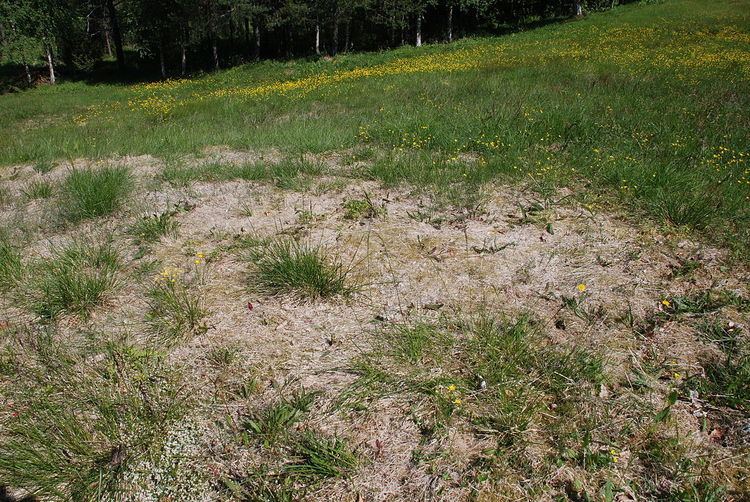 | ||
Snow mold is a type of fungus and a turf disease that damages or kills grass after snow melts, typically in late winter. Its damage is usually concentrated in circles three to twelve inches in diameter, although yards may have many of these circles, sometimes to the point at which it becomes hard to differentiate between different circles. Snow mold comes in two varieties: pink or gray. While it can affect all types of grasses, Kentucky bluegrass and fescue lawns are least affected by snow mold.
Contents
Gray snow mold
Gray snow mold (Typhula spp. or Typhula blight) is the less damaging form of snow mold. While its damage may appear widespread, it typically does little damage to the grass itself, only to the blades. Unlike most plant pathogens, it is able to survive throughout hot summer months as sclerotia under the ground or in plant debris. Typhula blight is commonly found in United States in the Great Lakes region and anywhere with cold winter temperatures and persistent snow fall.
Pink snow mold
Pink snow mold (Microdochium nivale or Fusarium patch) is the more severe form of snow mold, and can destroy the roots and crowns of grass, causing more damage than gray snow mold. Like gray snow mold, it is able to survive the summer months in decayed plant debris as spores or mycelium.
Prevention
As snow mold remains dormant during summer months when other forms of disease fungi are most active, steps to prevent snow mold infestations must be taken near the end of the summer months. While active lawn care such as regular mowing and raking of leaves is typically sufficient to prevent an infestation, the use of chemicals may sometimes be required. Fungicides, which should typically be applied immediately prior to the first large snowfall in an area, can be used if typical cultural methods do not work.
